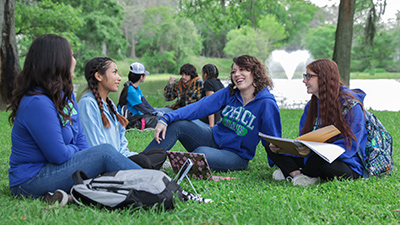
Current Issue

Non-point Source Pollution: It begins at home!
The landmark Clean Water Act (CWA) of 1972 in the United States established a foundational framework for regulating the discharge of both point and non-point source pollutants into the nation's waters, as well as setting surface water quality standards. Point source pollutants come from a single, identifiable origin, such as a discharge pipe from a factory. On the other hand, non-point source (NPS) pollution originates from a wide area without a specific source, like runoff from agricultural fields or urban streets during a rain event. This widespread nature complicates the task of pinpointing the exact source of the pollutants. The CWA primarily addressed point source pollution through regulations and permits, while NPS pollution remained in the realm of voluntary or local action in urban and rural areas. In the mid-1990s, the U.S. Environmental Protection Agency began to address some non-point source pollution through a series of new stormwater permits, however mitigating NPS pollution and improving water quality requires coordinated efforts from individual and community-based efforts.
Many individuals do not realize how their actions contribute to non-point source pollution, either directly through their consumption and disposal habits or indirectly through the products and services they purchase (e.g., the life of a plastic water bottle). It is essential for individuals to acknowledge their role in this issue and understand how they can help provide solutions. Tackling non-point source pollution starts at the individual level - change begins at home.
Students will learn about NPS pollution and identify its origins in both urban and rural settings. They will learn how to conduct their own NPS survey in their community and watershed. Additionally, they will learn about NPS mitigation strategies, which encompass actions at both the individual level - such as conservation, recycling, and responsible consumption - and the community level, including watershed planning, best management practices, nature-based solutions, water quality testing, and litter prevention initiatives.
2026 Current Issue Study Guide (NCF-Envirothon)
- Key Topic 1: Non-point Source Pollution Status
- Define non-point source (NPS) pollution and differentiate it from point source pollution using real-world examples from urban and rural settings.
- Explain changes in watershed ecology that influence NPS pollution (Water cycle, nutrient cycles, carbon cycles, river continuum concept).
- Identify major types, sources and pathways of NPS pollution in surface water systems, including stormwater runoff, agricultural fields, and impervious surfaces.
- Describe the impacts of NPS pollution on water quality and designated water uses (e.g., recreation, fisheries, drinking water).
- Key Topic 2: NPS in a Growing World and Your Role in It
- Explain how population growth, urban expansion, and agricultural intensification contribute to increased non-point source pollution globally and locally.
- Compare the effects of land use types (e.g., urban, suburban, agricultural) on runoff volume and pollutant loading.
- Identify common products or practices in daily life that contribute to non-point source pollution through indirect pathways (e.g., fertilizers, car washing, pet waste).
- Illustrate the concept of a personal environmental footprint as it relates to NPS pollution, using tools such as footprint calculators.
- Key Topic 3: The Role of the Individual/Community in NPS issues and solutions
- Describe the role that individuals, families, and local communities can play in reducing NPS pollution through behavior change and local initiatives.
- Identify examples of community-based solutions to NPS pollution (e.g., storm drain marking campaigns, rain garden installations, stream cleanups).
- Compare the effectiveness of individual vs. collective actions in mitigating NPS pollution at the watershed scale.
- Demonstrate how to design or participate in a local outreach or monitoring project that addresses NPS pollution, such as conducting a stormwater audit or organizing a pollution prevention campaign.
- Interpret the benefits and limitations of volunteerism, citizen science, and public-private partnerships in addressing NPS issues.
- Key Topic 4: Strategies to Evaluate NPS Sources, Issues, and Solutions
- Identify tools and techniques used to assess non-point source pollution, including watershed mapping, stormwater flow tracing, and visual assessment methods.
- Explain how monitoring data (e.g., water quality indicators such as turbidity, E. coli, nutrients) can be used to evaluate the presence and severity of NPS pollution.
- Describe the challenges in monitoring, quantifying, and managing NPS pollution compared to point source pollution.
- Apply simple field protocols to evaluate land use and physical features (e.g., slope, impervious cover, vegetative buffers) that influence runoff and pollutant transport.
- Interpret basic maps, aerial imagery, or field data to locate potential sources of NPS pollution in a given watershed.
- Recommend appropriate solutions based on identified issues in a mock or real-world NPS pollution scenario, drawing on field evidence or data interpretation.
- Key Topic 5: Legislation, Regulations, and Voluntary Measures
- Summarize major U.S. policies and programs that address non-point source pollution, including the Clean Water Act (especially Sections 303 and 319) and Total Maximum Daily Loads (TMDLs).
- Differentiate between regulatory and voluntary approaches to controlling NPS pollution and identify examples of each.
- Describe how federal and state agencies support local communities in managing NPS pollution through funding, education, and technical assistance.
- Simulate a decision-making process where students must select appropriate policy or program tools to manage a fictional watershed’s NPS challenges.
- Key Topic 6: Your Best Management Practices for NPS
- Identify common BMPs used to reduce NPS pollution in urban, suburban, and agricultural environments (e.g., rain gardens, cover crops, buffer strips, pervious pavement).
- Explain how selected BMPs reduce pollutant loads or improve stormwater infiltration, using diagrams or real-world examples.
- Compare the costs, benefits, and feasibility of different BMPs in various land use contexts (e.g., a schoolyard vs. a farm vs. a residential street).
- Demonstrate how to plan or assess a BMP using a field checklist, photo documentation, or a site sketch (e.g., rain garden layout or runoff path).
- Recommend appropriate BMPs for a hypothetical site based on land use, soil conditions, and observed pollution risks.
Oral Presentation
Teams are provided materials needed to prepare their oral presentation. Presentation materials and procedures will be emailed to registered teams.






